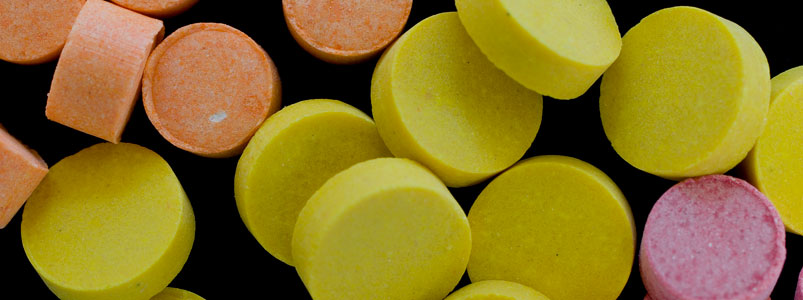Drug Facts
With so many voices and opinions out there, it’s important to understand the facts.
Fact is that while you’re a teen (and even into your early 20’s!), you’re still growing and developing, and drug abuse during these years in particular can have a lasting impact. Another fact to consider: the brain is much more vulnerable to addiction during these years. 90% of Americans with a substance abuse problem started smoking, drinking or using other drugs before age 18.
When it comes to drug use, individual reactions and experiences vary, so it’s important to understand the usual risks and effects, both short- and long-term. Knowledge can be the key to making your own best decisions.
Information provided isn’t to prevent anyone from seeking medical treatment under the advice and care of their doctor. A variety of substances offer potential medicinal value, but that doesn’t negate their risks, especially when abused.
- Adderall
- Alcohol
- Bath Salts
- Benzos
- Cocaine
- DXM
- GHB
- Hallucinogens
- Heroin
- Inhalants
- Ketamine
- LSD
- Marijuana
- MDMA
- Meth
- Mushrooms
- Over-the-Counter
- Prescription Drugs
- Rohypnol
- Salvia
- Spice
- Steroids
- Tobacco & Nicotine
- Xanax
- Adderall
- Alcohol
- Bath Salts
- Benzos
- Cocaine
- DXM
- GHB
- Hallucinogens
- Heroin
- Inhalants
- Ketamine
- LSD
- Marijuana
- MDMA
- Meth
- Mushrooms
- Over-the-Counter
- Prescription Drugs
- Rohypnol
- Salvia
- Spice
- Steroids
- Tobacco & Nicotine
- Xanax

Hallucinogens
Hallucinogens disrupt the normal functioning of your brain, making it hard to think, communicate and focus on reality. Psychosis, panic attacks and dangerous accidents are all possible risks.
What is it?
Hallucinogens are drugs that distort the way you perceive reality. They can cause you to see, feel and hear things that don’t exist, making it hard to communicate or think clearly. They can also cause rapid, intense emotional mood swings.1
Hallucinogens work by disrupting how your nerve cells and the neurotransmitter serotonin interact throughout the brain and spinal cord.2 By changing the normal, healthy structure of serotonin in the body, hallucinogens twist and alter the way your brain processes your senses, feelings and visual information, loosening your grip on reality.
LSD (AKA: Acid, blotter, cubes, microdot, yellow sunshine, blue heaven, Cid): an odorless, colorless chemical that comes from ergot, a fungus that grows on grains.
Mushrooms (Psilocybin) (AKA: Simple Simon, shrooms, silly putty, sherms, musk, boomers): psilocybin is the hallucinogenic chemical found in approximately 190 species of edible mushrooms.
Mescaline (AKA: Cactus, cactus buttons, cactus joint, mesc, mescal, mese, mezc, moon, musk, topi): occurs naturally in certain types of cactus plants, including the peyote cactus.
The Risks
Taking any hallucinogens can cause you to experience anxiety, fear and paranoia, sometimes verging on psychosis (a complete loss of contact with reality). In this state of mind, it can be very easy to have a dangerous, or even fatal, accident.
Long-Term Effects
Though more common with LSD, all hallucinogens can cause flashbacksófeelings and thoughts that replay the effects of being on the drug weeks or even years after taking them. Since all hallucinogens disturb the normal functioning of the brain, they put you at risk of developing long-lasting psychoses or mental disorders.
The Bottom Line
The effects of hallucinogenic drugs are highly unpredictable. They depend on the amount taken and on your own unique personality and brain chemistry. And regardless of the effects being sought, these drugs almost always impair judgment, compounding their unpredictability, and making you vulnerable to dangerous or even fatal situations, in addition to the longer-term risks to your mental health.
- National Institute on Drug Abuse. Research Report Series — Hallucinogens and Dissociative Drugs.
Retrieved July 2011.
View Source [↩] - National Institute on Drug Abuse. Research Report Series — Hallucinogens and Dissociative Drugs.
Retrieved July 2011.
View Source [↩]







